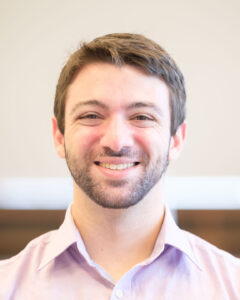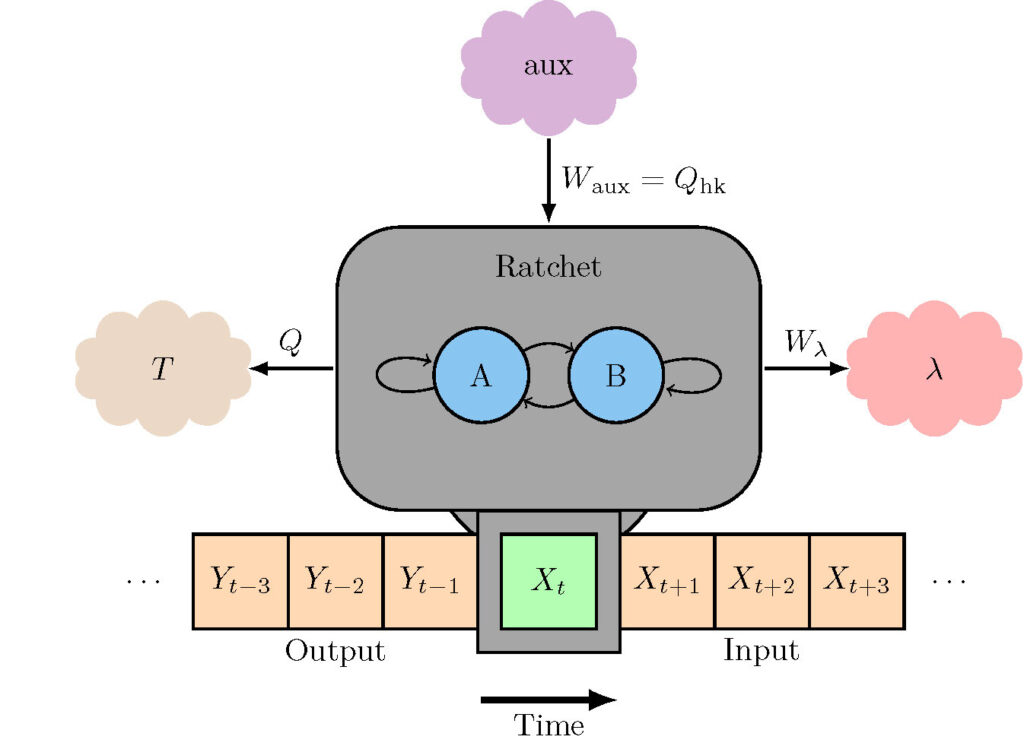SRI Stories: A Year of Living Magically
“I get to create things that have never existed in the universe before, hold them in my hand and share them,” says Ryan Stolley PhD’13 an associate director of the Science Research Initiative (SRI) at the University of Utah, and adjunct assistant professor of chemistry.
“Teaching students and giving them an opportunity to explore the nature of the universe and share that magic is incredible.”
If it sounds like Stolley is some kind of magician, he is, and not just as an established chemist, but as someone who mentors STEM undergraduates through hands-on, first-year-and-beyond research experiences arguably without equal in the US.
Stolley was recently acknowledged as one of 2024's “Forty Under 40” by Utah Business magazine which annually celebrates the professionals changing the Beehive State’s business landscape in big ways — all before reaching the age of 40. In addition to his work at the U, he is principal chemist of Glycosurf, LLC a local chemical and personal care product company that has garnered national attention in the field of critical minerals recovery.
This year’s honorees “embody the essence of leadership, resilience and forward-thinking that not only propels their success but also serves as a catalyst for the evolution of the business landscape in the state as a whole."
A penchant for conjuring

^ Ryan Stolley. Credit: 2024 Forty Under 40 awards photographed by MANICPROJECT for Utah Business. ^^ Banner Photo above: In the lab. Credit Todd Anderson.
The “magic” of learning that Stolley has a penchant for conjuring settles in his undergrad mentees on the molecular level — not only in the lab, busy with several chemistry-related projects — but in the internal, still rudimentary mind and imagination of a young scientist. Stolley knows something about that mysterious transfer of knowledge in higher education where students are paired with esteemed mentors who not only share their scientific expertise but, critically, also teach their students how to learn, and even why.
Stolley is from Aurora, outside Denver where, as a self-described “latch-key kid” he was largely left to his own devices. “I got into a lot of trouble and got bad grades,” he says. In part because of his membership in the Choctaw Nation of Oklahoma, he enrolled in college where he played lacrosse and was a first team All-American. (In October, he was inducted into the college’s lacrosse hall of fame.) There he met Monte Helm (now at Metropolitan Community College-Kansas City) who made a measurable difference in the trajectory of Stolley’s life, first at Fort Lewis College in Colorado and then, with Helm’s assistance, through a post-doctoral fellowship at Pacific Northwest National Lab.
“Ryan’s curiosity and dedication to learning is inspiring, coupled with his natural gift for motivating and leading others, [he has been] propelled … to achieve remarkable accomplishments,” says Helm upon learning of Stolley’s Utah recognition.
Additionally, Stolley first met Cindy Browder, an undergraduate research mentor at Ft. Lewis. She would later earn her doctorate at the U in 2001 and is now on faculty at Northern Arizona University in Flagstaff. Both were “a big inspiration for my current position with the SRI," says Stolley, “trying to help students find purpose through science and personal mentorship.”
“Ryan seemed destined to succeed from my first interactions with him,” Browder says. “But Ryan should know how he shaped me and how I work with students. My mentoring successes, especially with students from historically excluded populations, are rooted in what Ryan taught me.”
Their mutual influence has indeed come full circle, especially evident as Stolley continues his research with 21 SRI students distributed across eight projects that vary from organic methods development to natural products synthesis to condensed matter physics. A handful of papers, both independently and in collaboration with multiple other labs at the U, are being developed and will hopefully be published by the end of the year.
A natural fit
This research is a natural fit for Stolley’s work as lead chemist at the award-winning Glycosurf which manufactures surfactants, substances that, when added to a liquid, reduces its surface tension, thereby increasing its spreading and wetting properties – the major ingredient in a variety of soaps. Founded in 2013, the company’s ambition is to expand its creation of a green glycolipid version of surfactants for a variety of applications, including soaps, lotions and products for critical mineral extraction/purification. “We have a ton of new partnerships and products in development,” he says. “Putting them through their paces and bringing them to scale is very exciting."
In the SRI labs where observers can view Stolley and his undergrads through the fishbowl architecture on the third floor of the Crocker Science Center, the choreography of the lab can seem frenetic and intense. Gloved and gowned, students in their first-year can be seen skirting around fume hoods and manipulating assays to uncover new reaction paradigms using under-explored or entirely new functional groups, exotic ligands for rare-earth element coordination and a variety of exotic conducting materials.
The dance embodied in this research progress, product development and partnerships is just the walk-up to those eventual “pay-days” when the mentor-researcher holds in his hand the aforementioned “new creations” to share with students. It’s at that singular moment where the magic is transferred to a new generation, not unlike what Ryan Stolley, still under the age of 40, experienced himself as a very young scientist first getting his start in Colorado.
By David Pace
SRI Stories is a series by the College of Science, intended to share transformative experiences from students, alums, postdocs and faculty of the Science Research Initiative. To read more stories, visit the SRI Stories page.






 Not as excited, perhaps, as bees get when they’re being looked at and managed by an eager student researcher. Little do they know, they are in good (and ambitious) hands. The Missoula, Montana native graduated with no fewer than three degrees: two BS honors degrees, one in biology and the other in Environmental and Sustainability Studies as well as a BA in Latin American Studies.
Not as excited, perhaps, as bees get when they’re being looked at and managed by an eager student researcher. Little do they know, they are in good (and ambitious) hands. The Missoula, Montana native graduated with no fewer than three degrees: two BS honors degrees, one in biology and the other in Environmental and Sustainability Studies as well as a BA in Latin American Studies.
 Ali naturally gravitated towards chemistry classes in high school. Upon the recommendation of an influential teacher, Ali became more inspired by a future in chemistry and completed a pharmacy technician certification program to gain real-world experience in the field. Working as a pharmacy tech proved valuable for Ali; however, they craved work that was more “behind the scenes” of pharmacological development. This epiphany led Ali to recognize that research was their long-term career goal.
Ali naturally gravitated towards chemistry classes in high school. Upon the recommendation of an influential teacher, Ali became more inspired by a future in chemistry and completed a pharmacy technician certification program to gain real-world experience in the field. Working as a pharmacy tech proved valuable for Ali; however, they craved work that was more “behind the scenes” of pharmacological development. This epiphany led Ali to recognize that research was their long-term career goal.

